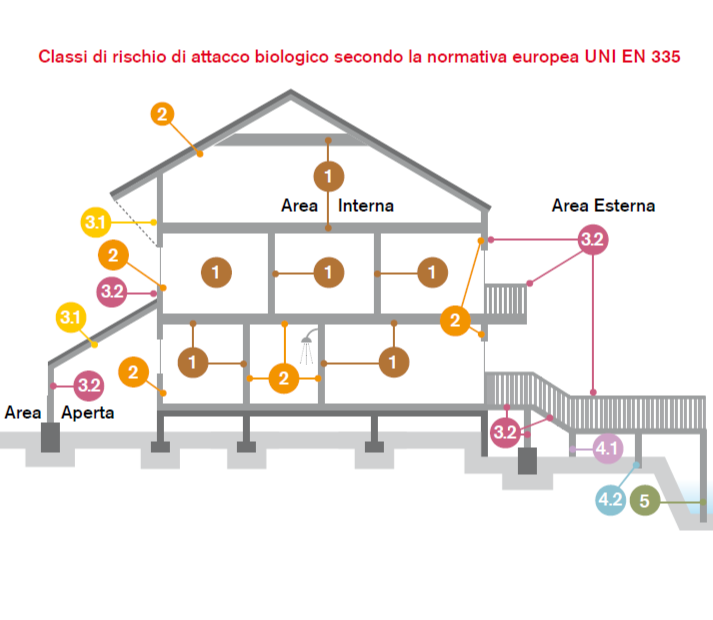
WHAT ARE THE RELEVANT STANDARDS?
THE RIGHT PROTECTION FOR WOOD


The EU has set out the parameters for obtaining the right protection for wooden structures. These refer to the wood’s durability, construction and chemical protection. These seemingly complex terms actually express very simple concepts that are easy to put into practice.
When a structure is built out of wood, it is always necessary to think about how to protect it from its enemies. In addition to fire, these come in the form of biological attack (fungus and insects) and climatic attack (sunlight and water). Thought must be given to wood protection at the time of construction, choosing the most resistant wood and the construction systems that offer it the most protection. Standard EN 350 classifies and defines the degree of durability of the various types of wood (see the EN 350 table). Exotic woods such as teak have a natural resistance far superior to wood from European conifers such as pine and fir. This is why garden furniture and decking are increasingly made of exotic wood. However, despite the fact that it requires greater care, for economic reasons wood used in construction is more likely to be from European forests, also because this raw material is more renewable. Taking these issues into consideration, the best construction choices can be made, such as using projecting roofing to prevent puddles of stagnant water, known as water traps.
If the type of wood and the type of construction protection are not enough, appropriate chemical protection systems are needed. Standard EN 335 defines the various types of use the wood may be put to and the right protective treatment to choose. There are many different situations to consider. The wood may be placed in an indoor environment with controlled temperature and damp, or in situations with more damp, or installed outdoors with exposure to bad weather, in direct contact with the soil and water, even possibly immersed in water. Clearly the risk increases with each of these situations and the protection must be chosen on this basis. Chemical protection obtained by applying surface coatings with a brush, spray or machine, that offer only a limited depth of impregnation, should only be used on risk class 3.2 or lower, which includes all structures completely exposed outdoors but not in contact with the soil and with water. These structures can require protection from fungus, insects and atmospheric agents (see the risk class table).
Standard EN 599-1 sets out the tests protective treatments for the various types of use must undergo. For example, if a structure is outside but under cover, protection against fungus and insects is required, and the product used must have passed the EU tests relating to the individual risks to which it is exposed. Standard EN 599-1 lists the relevant tests.
The choice will be simpler once all the products are registered according to the Biocides Directive. This EU Directive has been formulated to control the active ingredients put on sale and also to verify their effectiveness. This means that if a product is registered under the Biocides Directive, this is automatic proof that it has passed all the tests listed in Standard EN 599-1 and therefore it is only necessary to read the technical specification, see whether the product is registered and check the types of protection listed. If it corresponds to the required class of usage, you can be sure it is the right protection and that it complies with the standards

